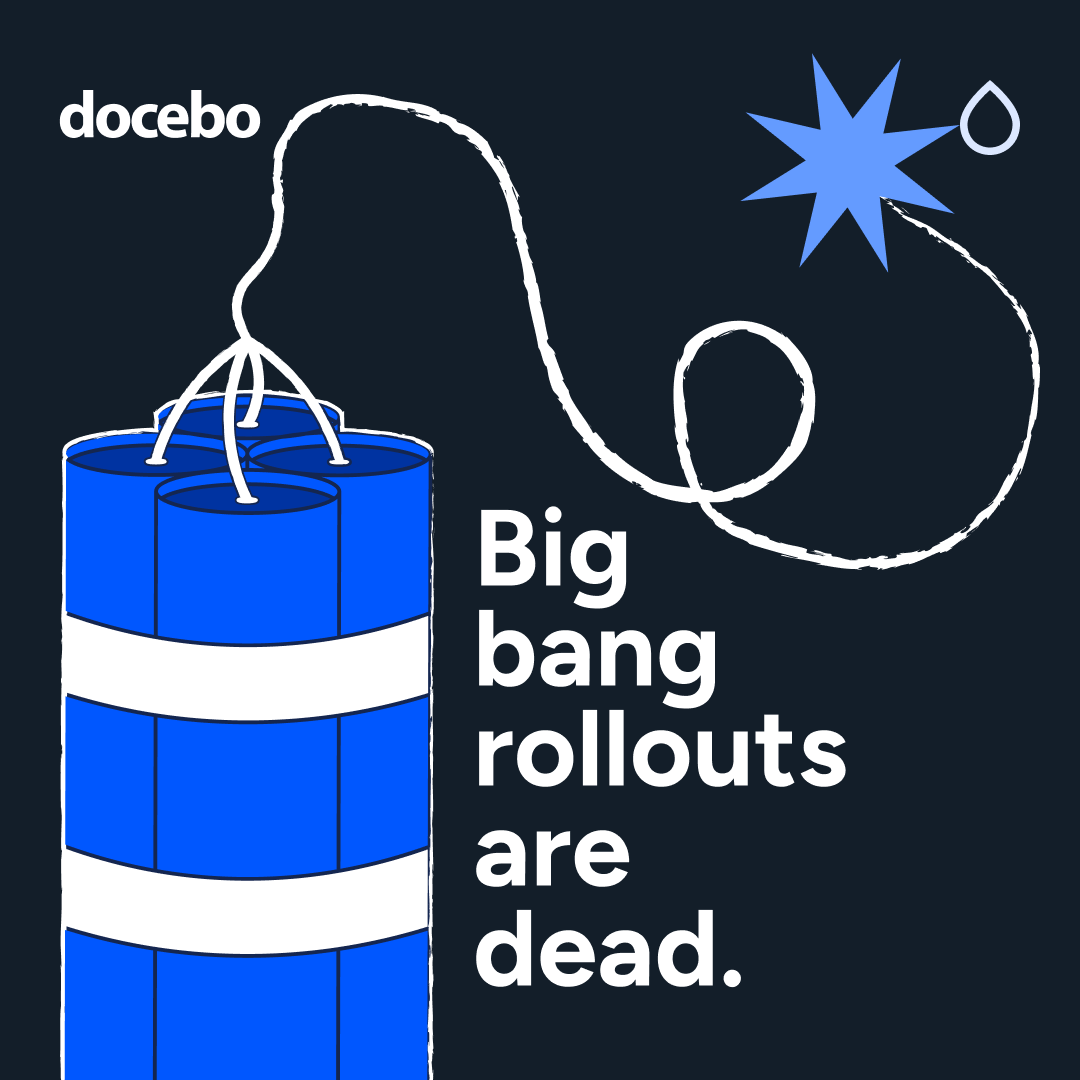What you’re reading: This is a drop from the Docebo DRIP (Data, Research, and Insights Program). Every two weeks, we release fresh, data-packed insights. Expect hard stats, sharper truths, and takeaways you can use right now to elevate L&D.
If your rollout strategy is still “flip the switch, flood the system, and hope for the best,” it’s time for an intervention. The numbers are in—and the big bang approach is burning you.

Our data says the real winners take a different route.
Phased rollouts win (Every. Single. Time. )
Organizations that launch in stages see an adoption rate of 78% (vs. 65% for big bang). Learners stick around longer too: 69% completion (compared to 54%) And satisfaction? 83% with phased rollouts (a massive leap from 62%).
Translation: slow and steady doesn’t just win the race, it leaves big bang launches in the dust.
Collaboration isn’t optional. (It’s the cheat code.)
The leading organizations don’t silo implementation. They pull in IT, HR, Marketing, and business units from the start. The payoff? 34% higher adoption, 42% fewer technical nightmares, and exec sponsors who actually fight for budget instead of questioning it.
If you’re rolling out in a vacuum, you’re rolling out wrong.
The launch isn’t the finish line
The best teams treat rollout as a living thing. 56% of successful orgs prioritize real-time feedback, embedding microsurveys and running A/B tests like their lives depend on it.
Constant iteration isn’t busywork—it’s why their engagement doesn’t fizzle once the confetti settles.
The bottom line
Don’t bet everything on a single launch date.
Big bang launches may look flashy, but phased, collaborative, and feedback-driven rollouts actually work. That’s why the smartest L&D teams don’t just launch. They launch smaller, listen harder, and adjust faster.